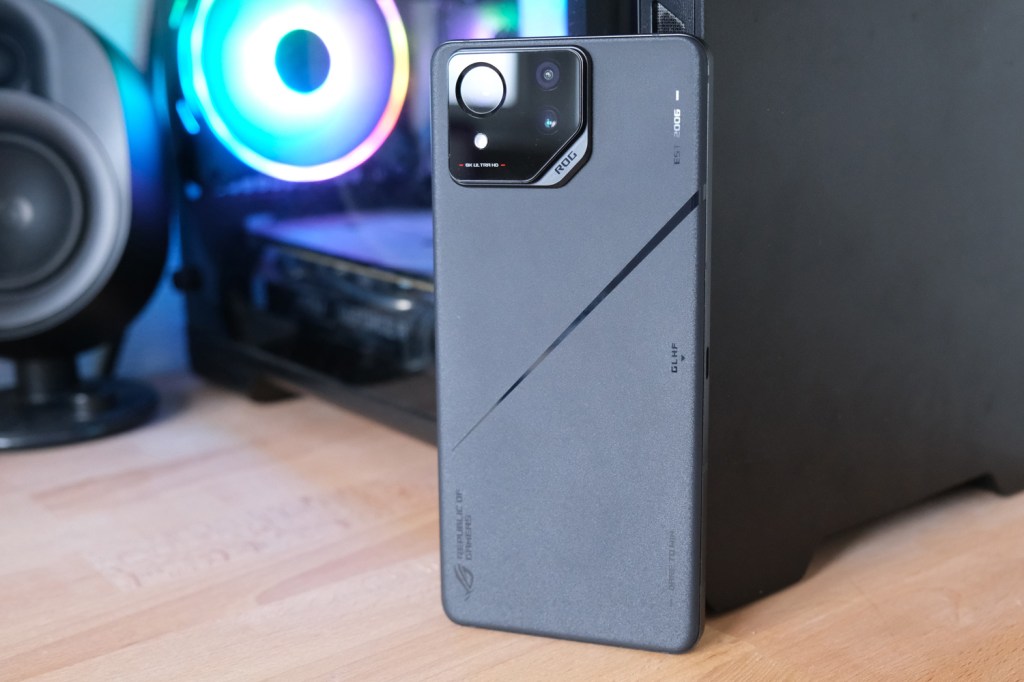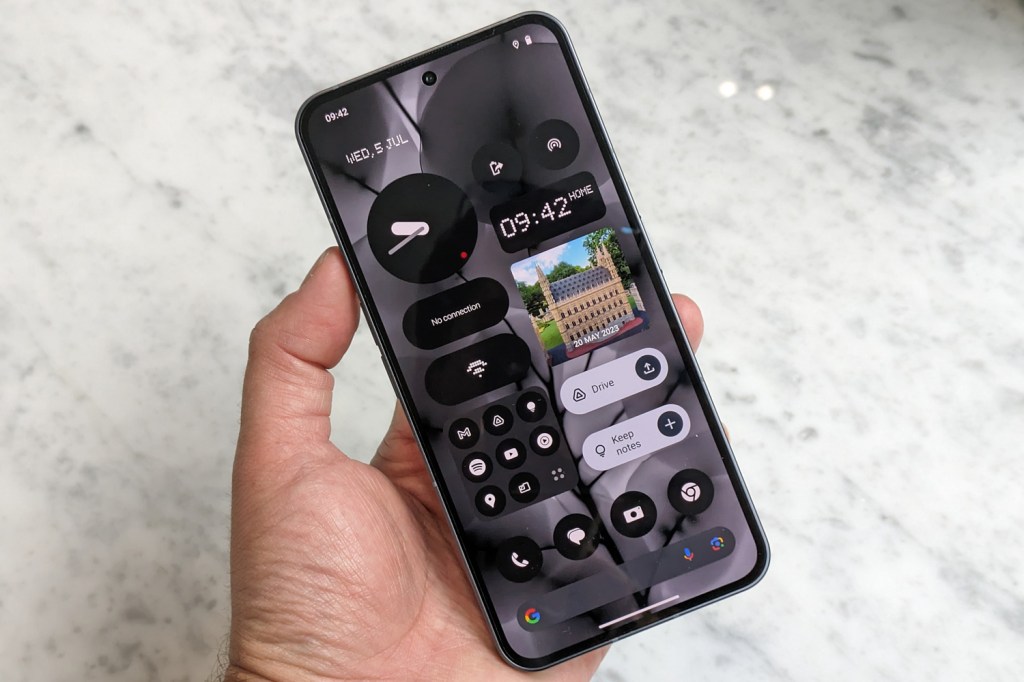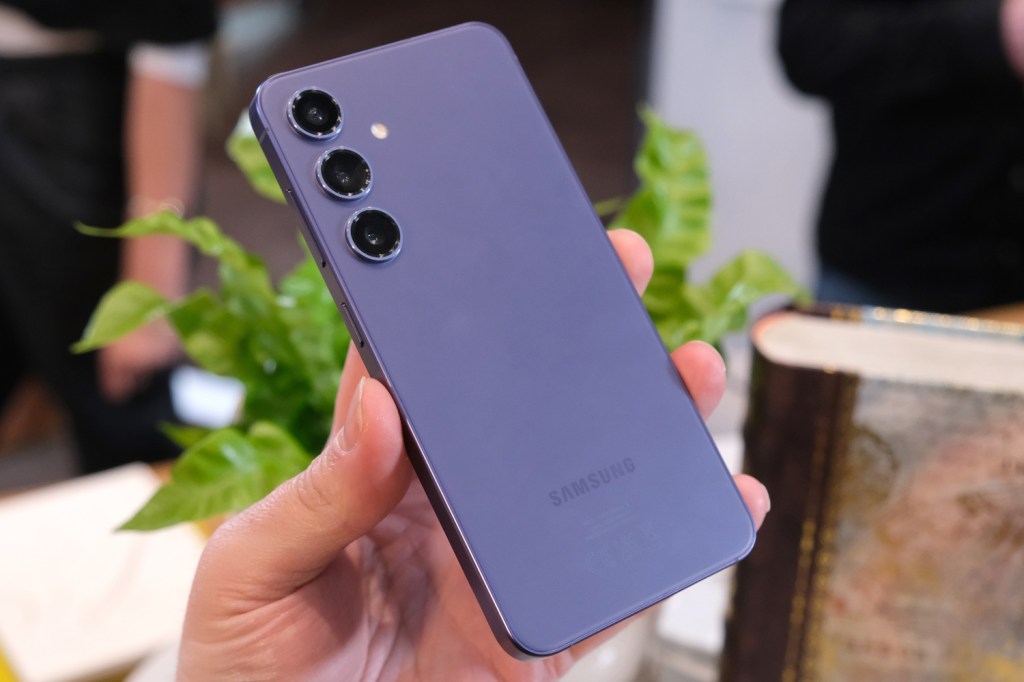From budget bargains and mid-range marvels to fabulous flagships, foldable friends and the best smartphones on sale overall, contenders for the title of best gaming smartphone come in all shapes and sizes.
Mobile tech has come on in leaps and bounds recently, meaning you can play preposterously popular 3D titles like Genshin Impact and Call of Duty Mobile while on the move. Sorry, Doodle Jump and Angry Birds – your time has passed. As you can imagine, a bang-up gaming phone needs a processor capable of pushing performance to the max, more RAM than a desktop computer, and a dazzling display. There’s also no shortage of accessories that can take your mobile gaming to the next level.
Even with that knowledge, separating the best from the rest in a market this crowded is no easy feat. That’s why we’ve taken the liberty of spotlighting some of the very best gaming phones we’ve encountered on our travels. Are you ready, player one?
What’s the best gaming smartphone?
Before we crack on with the full list, here’s a look at our three top choices:
- Best overall gaming smartphone: Asus ROG Phone 8 Pro (buy now)
Outstanding performance and dedicated accessories make Asus’ latest ROG handset the clear winner for gamers who don’t like to compromise. It’s more of a mainstream handset than previous efforts, ditching the active cooling and OTT styling for subtler, sleeker looks and IP68 water resistance. Its cameras are better than any other gaming phone too. If you want one single device for daily duties and for gaming, this has to be it. - Best iOS gaming smartphone: Apple iPhone 16 Pro Max (buy now)
Apple Arcade subscribers can do no better than the iPhone 16 Pro Max. It’s beyond powerful, with a stunning screen that’ll have any game looking its best, and a library of titles available through the App Store that gets close to full-on games consoles in a way no Android phone can match. It’s also just a brilliant all-round smartphone, even with that wince-inducing price. - Best small gaming smartphone: Samsung Galaxy S24 (buy now)
Powerful phones that also slip into your smallest pockets are now few and far between, with even previous stalwart Asus going big for its latest Zenfone generation. That makes Samsung’s most mainstream S24 model our new top choice. Whether you get one with an Exynos or a Snapdragon CPU, there’s more than enough oomph to play the most demanding titles. It’s a fantastic all-rounder elsewhere, with great cameras, clever AI additions and sharp styling. It doesn’t cost the earth like larger rivals, either. - Best affordable gaming smartphone: Nothing Phone 2 (buy now)
Nothing’s second stab at a smartphone sticks with a previous-gen chipset, which helps keep the price low enough to earn it our recommendation for gamers on a modest budget. There are no dedicated buttons, official accessories or extra USB ports – but it’ll still chew through anything in the Google Play Store, and is very capable everywhere else.
The best smartphones for gaming you can buy today:


1. Asus ROG Phone 8 Pro
Asus’ top-tier Android gaming phone doesn’t actually look like one at first glance. The firm has majorly dialled down the extreme styling of previous generations, with the aim of making it a more mainstream device. That includes superior rear cameras than just about any gaming phone you’d care to mention, and dimensions that don’t demand clown suit-like pants pockets.
It’s performance that matters most, of course, and a Snapdragon 8 Gen 3 chipset guarantees epic frame rates in any game you’d care to name. Depending on spec there’s either 12, 16 or 24GB of RAM, and as much as 1TB of storage, so you’ll be able to download hundreds of games from the Google Play Store without worrying too much about running out of space.
The 6.78in screen takes the refresh rate all the way up to 165Hz, and it’s an AMOLED panel for vivid colours and excellent contrast. Air triggers built into the frame free your fingers from the touchscreen, too. If you opt for the top-tier ROG Phone 8 Pro Edition, there’s also an active cooling stand in the box; it plugs into the extra USB-C port halfway along the side of the phone to both support it on a table and, with its quietly whirring fan, dissipate some of the heat the phone produces and prevent it from slowing down. Just keep in mind Asus has confirmed a new version is on the way imminently, if you’re all about the newest and shiniest hardware.


2. iPhone 16 Pro Max
The new iPhone is always the best iPhone, and the iPhone 16 Pro Max is the latest and greatest. It may be expensive, but if gaming on iPhones is your thing the Pro Max is the one to get.
It’s not just the larger, brighter screen that makes this a must. It’s the A18 Pro processor, which you won’t find on the baseline iPhone 16. This extra power makes the phone much faster than the competition, meaning you’ll have better frame rates and have to wait less time as games load, and unlocks extra antialiasing modes so your games look smoother.
There’s really more power in this phone than anyone really needs. But, after all, it’s the gamers who push their phones to the edge of their performance by demanding to play titles like Total War: Medieval 2 on the train. With an iPhone 16 Pro Max, that’s no problem.


3. Nothing Phone 2
Phone 2 builds on what made Nothing’s first smartphone so unique, with more glyph lighting and a streamlined take on Android that might just be the best custom interface we’d used since the days of HTC Sense. It’s the larger 6.7in screen and Snapdragon 8+ Gen 1 CPU that make it a top choice for gamers, though.
It isn’t the very latest silicon, but a sensible display resolution means it doesn’t have to work overtime to play demanding titles, and is still potent enough to take advantage of the 120Hz refresh rate. That panel looks the business, too, with ample brightness, HDR support and skinny bezels on all four sides.
The 128GB model can be snapped up for £599, but with no microSD card expansion, we’d recommend shelling out for the 256GB model. At £629 it’s still a whole lot cheaper than a Google Pixel 8 Pro, Samsung Galaxy S24 or OnePlus 12.


4. Google Pixel 9 Pro
Google did a good job with the Pixel 7 and 8 series, but the Pixel 9, with its sleeker design, faster and AI-assisted CPU, built upon those foundations to become an excellent gaming phone. The Pro version isn’t actually top of the range any more (that’ll be the larger Pixel 9 Pro XL), but at 6.3in screen it’s a more portable powerhouse than many rivals.
The new G4 Tensor chip is great at things like voice recognition and anything that requires crunching an algorithm. It’s no slouch for gaming, thanks to a decent helping of RAM, meaning performance is up there with other flagship phones. The 4700mAh battery will keep you playing all day if you need to.


5. Samsung Galaxy S24
Samsung’s Galaxy smartphones have always been capable gamers, and the S24 picks up that mantle. The vanilla S24 makes this list because it’s the smallest of the bunch, and one of very few compact Android flagships still doing the rounds. That 6.2in screen is palm-friendly, yet packs in a colourful AMOLED panel with a better-than-Full HD resolution and 120Hz refresh rate that’s ideal for gaming.
Inside you’ll either find a Snapdragon 8 Gen 3 chipset or a Samsung-built Exynos 2400, depending on which side of the Atlantic you live on. Both are perfectly able to handle the latest titles at high frame rates, with ray tracing thrown in for good measure. 8GB of RAM is plenty, and there’s a handful of different storage options.
You give up a bit of battery capacity by going small, but this is still an all-day phone when you’re not hammering games. It has a fantastic set of cameras, too – maybe not the very best of all the phone world, but still up there with Apple and Google’s top efforts. Add in some effective AI-enhanced software and this is a superb all-rounder at a sensible price.
What to consider when buying a gaming smartphone
So you’re looking to buy the best gaming smartphone but you don’t know where to start? Don’t worry, we’re here to breakdown everything you need to look out for…
Starting with the processor and GPU. These are very important – look for phones with the latest chipsets either from Qualcomm, MediaTek, or Apple etc. A powerful GPU is essential for handling high-end games, so ensure it comes equipped with a high-performing GPU like Adreno (Qualcomm) or Mali (MediaTek).
RAM and storage are also important. A minimum of 8GB of RAM in a smartphone is recommended for gaming, with higher-end models offering 12GB or even 16GB for smoother multitasking and gaming performance. In terms of storage, consider at least 128GB of internal space, as games are becoming increasingly large Of course, additional space is needed for all of your other apps and pictures etc). Expandible storage could be useful here.
The display is another key component. High refresh rates (90Hz, 120Hz, or even 144Hz) provide smoother visuals, while lower response times reduce lag and improve gaming responsiveness. A minimum of Full HD+ (1080p) resolution is recommended, though some high-end models offer QHD (1440p) displays for better clarity.
Want long play sessions without worrying about your phone dying? A larger battery (4000mAh or higher) ensures longer gaming sessions, while fast charging capabilities (at least 30W) allow for quick recharges.
Software and game optimization features are important too. Gaming modes or game optimization features that prioritize game apps, block notifications, and manage resources can enhance the overall experience.
If you’re playing multiplayer games, good connectivity is important. Ensure the phone supports the latest standards like 5G and Wi-Fi 6 for lower latency and faster download speeds. If you use gaming accessories like controllers and headphones, look for the latest Bluetooth version.
Finally, the design and ergonomics of the phone are also important. A comfortable design is crucial for long gaming sessions, and some gaming phones feature additional shoulder buttons or touch-sensitive areas for enhanced control.
